 |
| Product Range |
 |
|
 PLASMA CUTTERS PLASMA CUTTERS |
|
|
| Kjellberg Plasma Cutting Machines |
| HiFocus 80i |
| HiFocus 130 |
| HiFocus 160i |
| HiFocus 161i |
| HiFocus 280i |
| HiFocus 360i |
| HiFocus 440i |
| Thermal Dynamic Automated Plasma Cutting Machines |
| Thermal Dynamic Automated Plasma Cutting Machines |
| Thermal Dynamic Automation Series |
Thermal Dynamics Manual Plasma
Cutting Inverters |
| Hypertherm Mechanized Plasma Cutter |
|
|
 |
|
| Plasma Consumables |
| Plasma Torches |
| CNC Machines |
| Welding Machines |
| Controller / THC |
| Nesting Software |
| Servo Motor Drives / Gearbox |
|
|
 |
|
|
| Kjellberg Plasma Cutting Machines |
|
|
 |
| |
HiFocus 80i |
 |
Cutting current at 100% duty cycle : 10 - 80 A |
 |
Cutting range : 0.5 - 25 mm |
 |
Piercing : up to 15 mm |
|
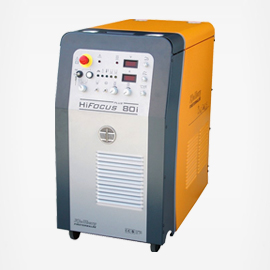 |
|
| |
 |
| |
HiFocus 130 |
 |
Cutting current at 100% duty cycle : 20 - 130 A |
 |
Cutting range : 16 A |
 |
Piercing : 0.5 - 40 mm |
|
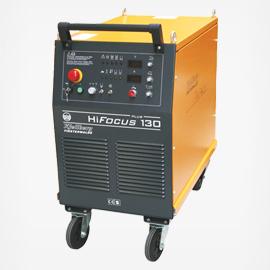 |
|
| |
 |
| |
HiFocus 160i |
 |
Cutting current at 100% duty cycle : 10 - 160 A |
 |
Marking current : 4 - 25 A |
 |
Cutting range : 0.5 - 50 mm |
|
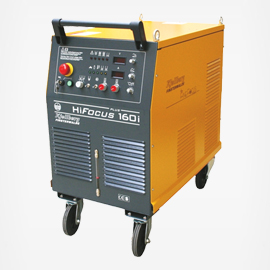 |
|
| |
 |
| |
HiFocus 161i |
 |
Cutting current at 100% duty cycle : 10 - 160 A |
 |
Marking current : 5 - 25 A |
 |
Cutting range : 0.5 - 50 mm |
|
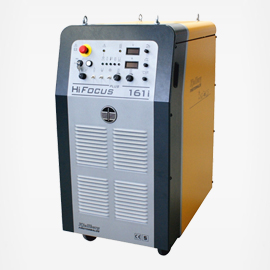 |
|
| |
 |
| |
HiFocus 280i |
 |
Cutting current at 100% duty cycle : 280 A |
 |
Marking current : 5 - 50 A |
 |
Cutting range : 0.5 - 70 mm |
|
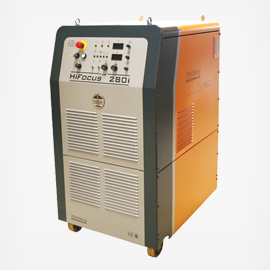 |
|
| |
 |
| |
HiFocus 360i |
 |
Cutting current at 100% duty cycle : 360 A |
 |
Marking current : 5 - 50 A |
 |
Cutting range : 0.5 - 80 mm |
|
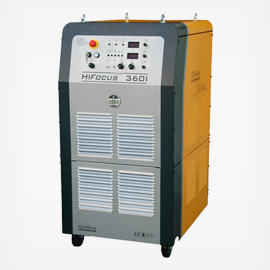 |
|
| |
 |
| |
HiFocus 440i |
 |
Cutting current at 100% duty cycle : 440 A |
 |
Marking current : 5 - 50 A |
 |
Piercing : up to 50 mm |
|
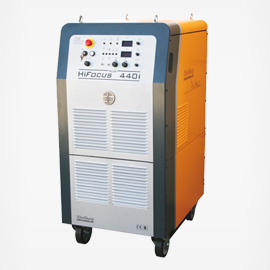 |
|
| |
| Comparison with Other Separation Methods |
| Although users increasingly choose plasma cutting, there are of course other alternatives, too. These include oxy-fuel and laser cutting, both being likewise thermal separation methods, but also water jet cutting which does not have a thermal influence on the material. But what are the advantages of each method? How can the plasma cutting method compete with the other mentioned alternatives? Generally it can be said that each method has its right to exist because the demands on the separation method depend on the individual cutting task. Economic aspects, too, should not be overlooked. Often, there are several options how to solve a specific cutting task. Finally, the decision is often made by comparing the separation methods with each other with regard to their costs. In the following you will find a brief overview of the advantages and disadvantages of plasma, oxy-fuel, laser and water jet cutting. |
| |
- Plasma Cutting
- Oxy-Fuel Cutting
- Laser Cutting
- Water Jet Cutting
| |
|
|
| Advantages |
 |
Highest flexibility when cutting all electrically
conductive materials |
 |
Lowest requirements on material quality and working
environment |
 |
High cutting speeds when cutting thin and medium-
sized plates (up to 10 times higher compared to oxy-
fuel) |
 |
Higher cutting speeds when cutting medium-sized and
thick materials compared to laser |
 |
Operation with one or more torches possible
depending on batch size |
 |
Materials can be cut nearly dross-free (no after-
treatment required) |
 |
Without alternative when cutting medium-sized and
thick high-alloyed steel and aluminium plates |
 |
Excellent suitability when cutting thin and medium-
sized mild steel (up to 30 mm) |
 |
Cutting of high-tensile mild steel with low heat input |
 |
Very good automation capabilities |
 |
Underwater plasma cutting for very low heat warpage
of the workpiece and low noise level in the working
environment |
|
|
|
| Disadvantages |
 |
Limited use for materials with a thickness from 0.5 mm
up to 160 mm at present |
 |
A little broader kerf compared to laser cutting |
|
|
| |
|
|
| Advantages |
 |
Suitable for medium-sized and thick materials |
 |
Economic use of several torches |
 |
Low investment and consumables costs |
 |
Bevel cutting with up to three torches on one
aggregate |
|
|
|
| Disadvantages |
 |
Suitable for cutting mild steel only |
 |
High heat input, large heat-affected zone |
 |
Material warpage when cutting thin materials;
straightening work required |
 |
Bad cuts under 5 mm material thickness |
 |
Low dimensional accuracy when cutting repeat cuts
due to heat influence |
 |
Low cutting speed |
 |
After-treatment required due to partial dross
formation |
 |
Grinding of oxidized cut surfaces necessary for weld
preparation |
|
|
| |
|
|
| Advantages |
 |
High accuracy when cutting thin plates |
 |
Cutting of very small holes, narrow webs, acute-
angled geometric shapes, complex contours possible |
 |
Rectangular cutting edges |
 |
Very good automation capabilities |
 |
Extremely low heat input, no material warpage |
 |
Very small cutting kerf (0.2 mm to 0.4 mm) |
 |
High cutting speed when cutting thin plates (up to
approx. 4 mm) |
|
|
|
| Disadvantages |
 |
High investment and operating costs (high gas
consumption) |
 |
Special material quality required (laser plates) |
 |
Limited use (mild steel: 20 (25) mm, high-alloyed steel:
15 mm, aluminium: 10 mm) |
 |
Uneconomic for small batch sizes |
 |
Long piercing time for thick materials |
 |
No continuously smooth surface when cutting
medium-sized plates |
 |
High-precision height control between torch and
workpiece necessary |
 |
Restricted beam stability when cutting mild steel with
normal Si- and P-content |
 |
Reduced process liability when cutting mirroring
surfaces |
 |
Low efficiency factor (CO2 laser max. 10%) |
|
|
| |
|
|
| Advantages |
 |
Cutting of very small contours possible |
 |
No thermal influence on the material to be cut |
 |
Cutting of insulating materials also possible (also
combinations of materials) |
 |
Nearly rectangular cutting edges |
 |
No dust, smoke or vapours |
|
|
|
| Disadvantages |
 |
Very low cutting speed |
 |
Due to strong frictional forces on the cut surface the
beam looses energy with increasing depth and the
cutting quality worsens. |
 |
Direct water contact (materials get wet) |
 |
Water must be processed or filtered, abrasives must be disposed of separately |
|
|
|
| |
|